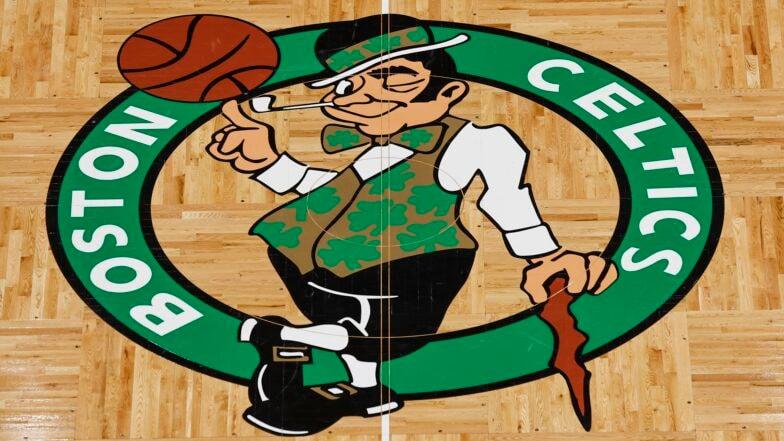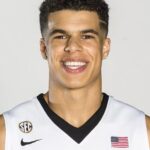The Boston Celtics have made a notable move ahead of the NBA trade deadline, sending forward Georges Niang to the Utah Jazz as part of a roster adjustment. In a corresponding development, the Celtics have also agreed to terms with forward Chris Boucher, signaling their intent to bolster their frontcourt depth. These transactions reflect Boston’s strategic efforts to fine-tune their lineup as they prepare for the crucial stretch of the season.
Celtics Send Georges Niang to Jazz in Strategic Roster Move
The Boston Celtics have executed a significant roster adjustment, sending veteran forward Georges Niang to the Utah Jazz. This strategic move highlights Boston’s intent to recalibrate their lineup and enhance flexibility for the upcoming season. Niang’s versatile shooting and floor spacing will provide the Jazz with a valuable asset as they look to bolster their wing rotation and depth. In return, the Celtics are focusing on acquiring talent that better fits their long-term vision.
Simultaneously, Boston has agreed to a deal with forward Chris Boucher, aiming to inject more size and defensive prowess into their frontcourt. Boucher’s athleticism and shot-blocking capabilities are expected to complement the Celtics’ core, offering both energy and rim protection. Below is a quick comparison of the incoming and outgoing players’ key stats from last season:
| Player | PTS per Game | 3P % | Rebounds | Blocks |
|---|---|---|---|---|
| Georges Niang | 9.8 | 38% | 3.1 | 0.2 |
| Chris Boucher | 7.5 | 34% | 5.9 | 1.1 |
- Niang: Experienced shooter, adds perimeter scoring for Utah
- Boucher: Defensive upgrade and frontcourt versatility for Boston
- Move signifies Boston’s shift toward a more robust defensive scheme
Analyzing Chris Bouchers Fit Within Boston Celtics Lineup
Chris Boucher’s arrival equips the Celtics with a versatile big man known for his rim protection, three-point shooting, and energy off the bench. His ability to stretch the floor with a reliable outside shot complements Boston’s primarily perimeter-oriented offense, allowing stars like Jayson Tatum and Jaylen Brown greater driving lanes. Boucher’s defensive instincts and shot-blocking prowess also provide added depth in the frontcourt, addressing the Celtics’ occasional struggles in interior defense and rebounding.
Integrating Boucher into the rotation creates new lineup possibilities for head coach Joe Mazzulla. His skill set fits well alongside Robert Williams III, as Boucher can play both the power forward and center positions, enabling Boston to maintain defensive toughness even when Williams rests. This boost in versatility is crucial, especially in late-game scenarios and during back-to-back stretches. The table below summarizes key attributes that Boucher brings compared to the current Celtics big men:
| Player | 3P % | Blocks Per Game | Versatility |
|---|---|---|---|
| Chris Boucher | 38% | 1.6 | PF/C |
| Robert Williams III | 16% | 2.5 | C |
| Al Horford | 34% | 0.5 | PF |
- Floor spacing: Boucher’s outside shooting helps stretch defenses.
- Defensive depth: Adds shot-blocking and rim protection off bench.
- Positional flexibility: Ability to interchange between power forward and center.
Implications of Recent Trades on Celtics Championship Aspirations
The Celtics’ recent maneuver to send Georges Niang to the Jazz while bringing Chris Boucher onboard signals a strategic recalibration aimed at bolstering depth and defensive versatility. Niang’s sharpshooting and floor spacing were valuable, but Boucher’s long wingspan and shot-blocking prowess offer Boston a more dynamic presence in the frontcourt. This trade addresses the team’s urgent need for rim protection and improved rebounding, key components for postseason success against dominant interior lineups in the East and beyond.
Examining the broader impact, the Celtics now look better equipped to withstand physical matchups and increase their switching capabilities on defense without sacrificing offensive fluidity. However, the loss of Niang’s shooting will require other perimeter players to step up from beyond the arc. The new roster mix suggests that the Celtics are prioritizing a more aggressive defensive identity, potentially leading to faster-paced transition opportunities. Below is a quick comparison of key contributors before and after the trade:
| Category | Before Trade (Niang) | After Trade (Boucher) |
|---|---|---|
| 3P Shooting % (2023-24) | 41.2% | 28.5% |
| Blocks Per Game | 0.3 | 1.1 |
| Rebounds Per Game | 2.5 | 4.1 |
| Defensive Versatility | Stretch 4 | Wing/Big hybrid |
- Improved interior defense could reduce opponents’ paint scoring by 5%
- Rebounding edge gives Celtics more second-chance opportunities
- Trade-off in floor spacing demands adjustment from perimeter scorers
Insights and Conclusions
As the Celtics finalize their roster moves by trading Georges Niang to the Jazz and securing a deal with Chris Boucher, the team signals a strategic shift aimed at bolstering their depth and versatility for the upcoming season. Fans and analysts alike will be watching closely to see how these changes translate on the court, as Boston aims to strengthen its position in an increasingly competitive Eastern Conference.














